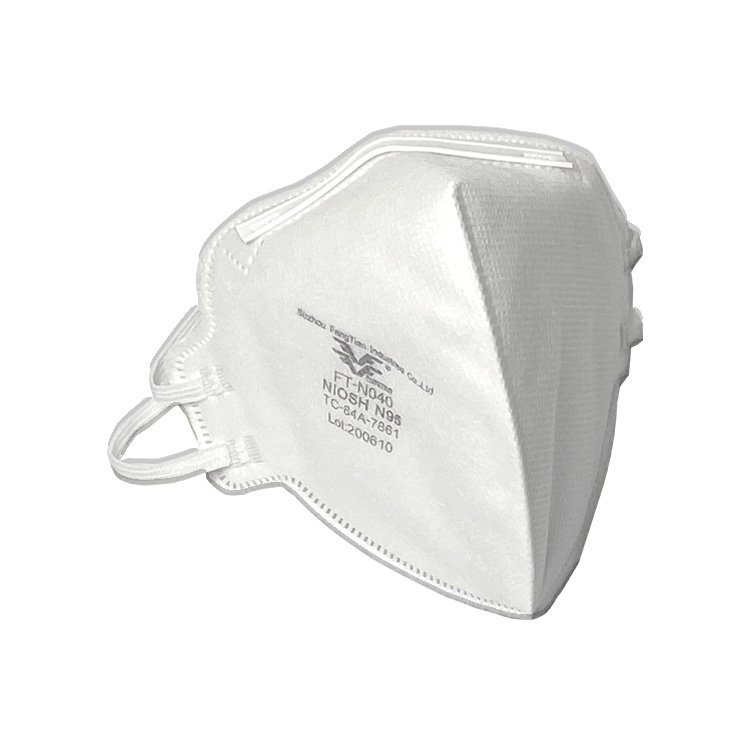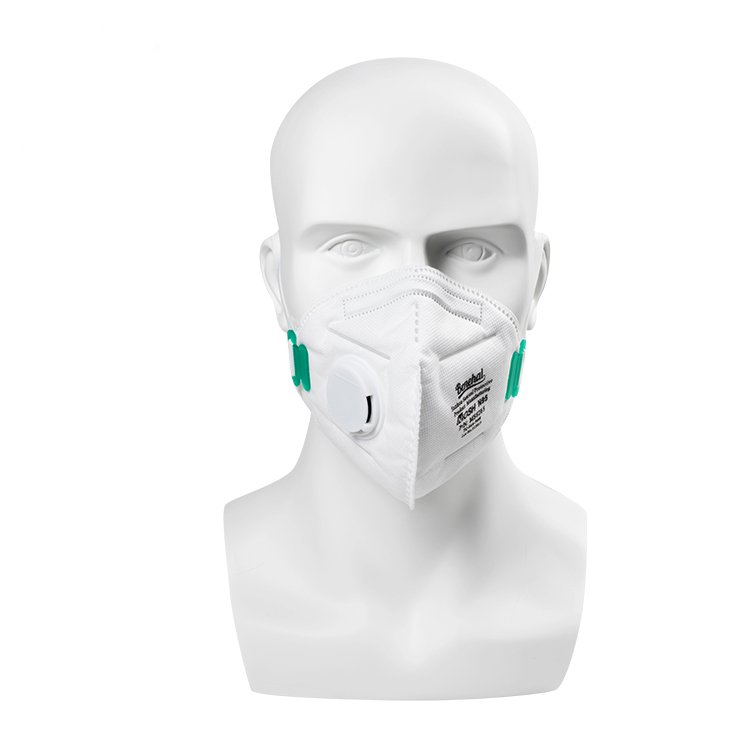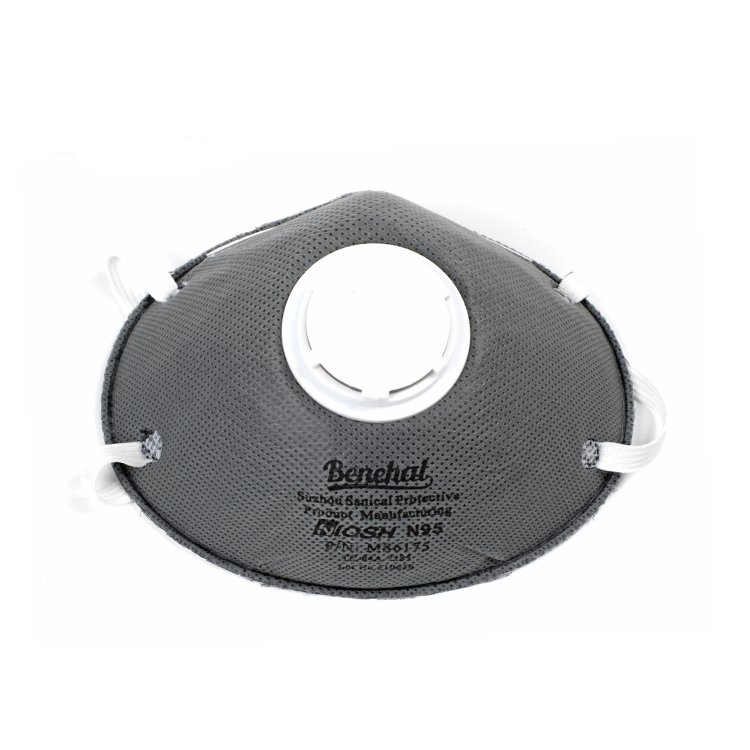The N95 mask, initially developed for industrial use, gained prominence during the outbreak of respiratory diseases. It is a critical tool in preventing the inhalation of airborne particles, including viruses and bacteria. Understanding the evolution of N95 masks helps users appreciate their significance in healthcare and other settings.
N95 masks adhere to stringent standards set by regulatory bodies like NIOSH (National Institute for Occupational Safety and Health). Certification ensures that the mask meets specific filtration efficiency and fit requirements. This information establishes the credibility and reliability of N95 masks.

Understanding the primary functions of N95 masks:
N95 masks are designed to filter out at least 95% of airborne particles, making them highly effective in protecting against respiratory infections. Their tight seal around the face ensures minimal leakage, providing superior respiratory protection.
N95 masks play a crucial role in mitigating the spread of respiratory illnesses, especially during pandemics. Their ability to filter out small particles makes them essential for healthcare professionals and the general public alike.
The lifespan of an N95 mask is a critical aspect that determines its efficacy in safeguarding users against airborne contaminants. Several factors contribute to the durability of N95 masks, each playing a pivotal role in their ability to maintain effectiveness over time.
The primary function of an N95 mask is to filter out airborne particles, including viruses and bacteria. Therefore, the level and type of contaminants to which the mask is exposed directly impact its lifespan.
In healthcare settings or areas with a high concentration of pollutants, N95 masks may experience a shorter lifespan due to increased particle accumulation on the filter.
Humidity plays a crucial role in the degradation of N95 masks. Excessive moisture can compromise the integrity of the mask's filter material, reducing its effectiveness.
High humidity environments can also contribute to the growth of mold or mildew on the mask, further diminishing its ability to provide adequate protection.
The frequency with which an N95 mask is used directly influences its lifespan. Masks used daily or for extended periods may experience more wear and tear compared to those used infrequently.
Continuous usage can lead to the gradual breakdown of the mask's structural components, impacting its fit and filtration efficiency.
Proper Storage Conditions:
Temperature Control: Storing N95 masks within a controlled temperature range is crucial. Extremes in temperature, whether excessively hot or cold, can affect the mask's materials and structural integrity.
Low Humidity Environment: N95 masks should be stored in environments with low humidity to prevent moisture absorption. Humidity can degrade the mask's electrostatic charge, which is vital for filtering out particles.
Dark and Dry Storage: Exposure to direct sunlight can damage the mask's materials. Storing N95 masks in a dark, dry place ensures their longevity.
Improper Storage Conditions:
Exposure to Extreme Temperatures: Leaving N95 masks in a car on a hot day or exposing them to freezing temperatures can lead to material degradation, affecting both fit and filtration efficiency.
Moisture Exposure: Storing masks in damp or humid conditions can facilitate the growth of mold and compromise the mask's structural integrity.
Proximity to Chemicals: Keeping N95 masks near chemicals or cleaning agents may expose them to substances that can damage the mask's filtering capabilities.

Exploring recommendations from N95 mask manufacturers on usage duration: Manufacturers provide specific guidelines on how long N95 masks can be worn safely. These recommendations consider factors like the mask's design, materials, and intended use.
How to interpret expiration dates on N95 masks: N95 masks typically have expiration dates stamped on them. Understanding how to interpret these dates is crucial for users to ensure they are using masks within their effective period.
Proper donning (putting on) and doffing (taking off) procedures are fundamental to ensuring the optimal performance of N95 masks and minimizing the risk of contamination. Following a step-by-step guide is crucial to maintaining the integrity of the mask and protecting both the wearer and those in their vicinity.
Clean Hands: Wash hands thoroughly with soap and water or use an alcohol-based hand sanitizer before handling the N95 mask.
Inspect the Mask: Check for any visible damage or deformities, ensuring the mask is in good condition.
Strap Placement: Hold the mask in one hand with the nosepiece at your fingertips. Place the top strap over your head, ensuring it rests above your ears. Pull the bottom strap over your head and position it below your ears.
Mold the Nosepiece: Pinch the metal nosepiece to conform it to the shape of your nose, ensuring a secure fit.
Perform Seal Check: Cover the mask with both hands, exhale sharply, and check for any air leaks around the edges. Adjust the straps if necessary.
Clean Hands: Wash hands thoroughly before initiating the doffing process.
Avoid Touching the Front: Do not touch the front of the mask to prevent contamination. Handle the mask only by the straps.
Removal of Straps: Grasp the bottom strap first and pull it over your head, followed by the top strap. Avoid touching your face during this process.
Discard or Store Properly: If disposable, discard the mask in a designated waste container. If reusable, store it in a breathable container, avoiding contact with surfaces.
Different settings necessitate distinct frequencies for N95 mask replacement to ensure consistent protection. Tailoring replacement guidelines to specific contexts helps users understand when it's time to swap their masks for fresh ones, optimizing both safety and cost-efficiency.
Healthcare Settings:
Frequency: Healthcare professionals working in high-risk environments should replace N95 masks after every patient encounter or when the mask becomes visibly soiled or damaged.
Rationale: Regular replacement maintains a high level of protection and minimizes the risk of cross-contamination between patients.
Public Settings and Outdoor Activities:
Frequency: Individuals using N95 masks for occasional outdoor activities may replace them after each use or when the mask becomes uncomfortable or difficult to breathe through.
Rationale: While N95 masks are highly effective, replacing them based on comfort ensures optimal filtration efficiency.
Workplace or Industrial Settings:
Frequency: Workers in settings with potential exposure to contaminants should follow guidelines provided by occupational health and safety regulations. Regular replacement is essential based on the level of exposure.
Guidelines for extended use and reuse of N95 masks: In situations where a steady supply of masks may be challenging, guidelines for extended use and reuse become crucial. Understanding how to safely extend the life of an N95 mask without compromising safety is paramount.
Risks and benefits associated with extended use: While extending the use of N95 masks may be necessary in certain situations, users need to be aware of the associated risks and benefits. Striking the right balance ensures both safety and resource conservation.
Overview of approved methods for decontaminating N95 masks: Decontamination is a practice that can extend the usability of N95 masks. Exploring approved methods, such as UV light, hydrogen peroxide, or steam, provides users with options to maintain mask integrity.
Safety considerations and limitations of decontamination: It's crucial to discuss the safety considerations and limitations of decontamination methods. Users need to be aware of potential risks and understand when decontamination is appropriate.
Identifying signs that indicate an N95 mask needs replacement: Masks can degrade over time, compromising their effectiveness. Educating users on common signs of wear and tear, such as damaged straps or visible damage to the filter, helps them recognize when a mask should be replaced.
Common issues leading to mask degradation: Understanding the common issues that lead to mask degradation, such as exposure to oils or chemicals, assists users in avoiding these situations and preserving the lifespan of their N95 masks.
Real-life accounts of individuals using N95 masks in different situations: Sharing user experiences provides valuable insights into the practical aspects of using N95 masks. Stories from healthcare professionals, essential workers, or the general public offer a human perspective on the challenges and benefits of mask usage.
Lessons learned from experiences with N95 mask longevity: Extracting lessons learned from real-world experiences helps readers make informed decisions about the longevity of their N95 masks. It also fosters a sense of community by showcasing shared experiences.

Exploring alternative mask options and their lifespans: While N95 masks are widely used, exploring alternative mask options, such as KN95 masks or respirators with different filtration levels, gives readers a broader perspective on available choices.
Innovative technologies or materials improving N95 mask durability: Highlighting innovations in mask technology, such as advanced filter materials or antiviral coatings, showcases the continuous efforts to enhance the durability and effectiveness of N95 masks.
Addressing any recent developments in N95 mask technology: The field of mask technology is continually evolving. Providing readers with updates on the latest advancements, whether in mask design or materials, keeps them informed about the most recent developments.
Changes in guidelines or recommendations from health organizations: Health organizations may update their guidelines based on new research or emerging circumstances. Keeping readers informed about any changes in recommendations ensures they are following the latest and most accurate information.
Answering common questions related to the lifespan of N95 masks: Addressing frequently asked questions consolidates essential information and provides quick answers for readers seeking specific details about N95 mask longevity.
Clarifying misconceptions about N95 mask durability: Misconceptions about N95 masks can lead to improper usage. Clarifying common misconceptions ensures that readers have accurate information and can make informed decisions about their mask usage.